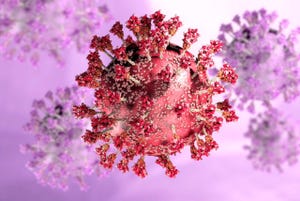Restless Leg Syndrome Device Wins FDA Clearance
June 3, 2014
The FDA has cleared Sensory Medical Inc. to sell Relaxis, a device that the San Clemente, CA-based company is touting as the first noninvasive, nonpharmacological treatment to help improve the quality of sleep in patients with primary Restless Legs Syndrome (RLS).
|
Sensory Medical's Relaxis Pad and controller (Courtesy Sensory Medical Inc.) |
"Our company was founded solely to find new alternatives for treating RLS, and we are pleased to be the first and only company to have a non-pharmacological approach, clinically proven and FDA cleared, to improve sleep by addressing symptoms of this devastating condition," Fred Burbank, MD, the privately-held startup Sensory Medical's CEO and an RLS sufferer himself, said in a news release announcing the FDA clearance.
Relaxis is a pad that delivers "specific vibrations" to disrupt RLS symptoms when needed. Sensory Medical says, "There's no need to get out of bed ... to make the symptoms go away." An RLS sufferer "can lay in bed with the pad under the affected area and experience relief of RLS symptoms." The treatment lasts 30 minutes and the device gradually ramps down its vibratory counterstimulation and shuts itself off. It is available by prescription.
The National Institute of Neurological Disorders and Stroke (NINDS) estimates that 12 million Americans may be suffering from RLS, a life-long neurological condition that causes discomfort, pain and sleep deprivation. NINDS says that RLS symptoms occur primarily while a person is resting, and may increase in severity during the night.
Twice as many women as men are affected by RLS, and both the prevalence and the severity of the episodes increase with age. According to the company, RLS is characterized by unpleasant sensations that occur mostly in the legs described as "itching under the skin," or a "tingling, creeping, crawling feeling." RLS is also known as Willis-Ekbom Disease (WED) and is said to affect up to 12 million Americans.
Refresh your medical device industry knowledge at MD&M East, June 9-12, 2014 in New York City. |
Before this approval, RLS patients were often prescribed medication therapy. According to Bloomberg Business Week, these medications include the dopaminergic agents used to treat Parkinson's disease, anti-convulsants, narcotic opioids, and muscle relaxants and sleep medications such as Benzodiazepines. Some of them present the risk of dependence or addiction and are considered inappropriate for certain RLS sufferers, including pregnant women and dialysis patients. NINDS reports that some of these drugs also have been found to actually worsen patients' RLS symptoms over time, despite initially providing relief.
Sensory Medical cautions that the Relaxis Pad is only intended for use on patients with primary Restless Legs Syndrome (RLS). and should not be used by people who have leg skin disorders such as eczema, psoriasis, cellulitis, or non-healing wounds; or have secondary RLS. Further, the company says that the device "should not be used on patients who have been diagnosed with deep venous thrombosis (DVT) in either leg during the last six months because of the known potential to dislodge or break up the clot and cause a pulmonary embolism."
Stephen Levy is a contributor to Qmed and MPMN.
About the Author(s)
You May Also Like



